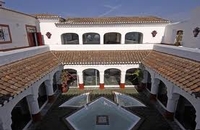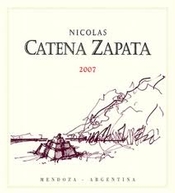WINERY OF THE YEAR:
Herdade do Esporão (Alentejo, Portugal)
Alentejo (sometimes called the Alentejo) lies south and east of Lisbon. A land of sun and wide, open spaces, it is sheep-grazing and olive-growing country, with a long history of local wine production, but few traditions ever thought worth exporting before now. All that has changed over the last two decades, with one producer in particular, Herdade do Esporão, leading the  way. Owned by Portuguese businessman José Roquette and directed by Australian winemaker David Baverstock, Esporão is producing exciting wines at all price levels, from the relatively simple Alandra and Monte Velho lines to the riveting Reservas and Private Selections. The company uses some international grape varieties, but concentrates far more on exploring the potential of Alentejo’s many native ones. That, ultimately, is what proves most exciting about the wines produced there today. They are very modern–Baverstock and his team having taken advantage of the latest research and technology–but they also are wonderfully distinctive. At a time when far too many of the world’s acclaimed wines taste far too alike, the reds and whites coming from Herdade do Esporão stood out for me in 2011 precisely because they refused to do so. I can’t say that they taste uniquely of Alentejo, but they most definitely taste true to themselves. And that’s plenty good enough for me.
way. Owned by Portuguese businessman José Roquette and directed by Australian winemaker David Baverstock, Esporão is producing exciting wines at all price levels, from the relatively simple Alandra and Monte Velho lines to the riveting Reservas and Private Selections. The company uses some international grape varieties, but concentrates far more on exploring the potential of Alentejo’s many native ones. That, ultimately, is what proves most exciting about the wines produced there today. They are very modern–Baverstock and his team having taken advantage of the latest research and technology–but they also are wonderfully distinctive. At a time when far too many of the world’s acclaimed wines taste far too alike, the reds and whites coming from Herdade do Esporão stood out for me in 2011 precisely because they refused to do so. I can’t say that they taste uniquely of Alentejo, but they most definitely taste true to themselves. And that’s plenty good enough for me.
WINE OF THE YEAR
Nicolas Catena Zapata 2007 (Mendoza, Argentina)
I remain convinced that the finest wines from Argentina are Cabernet, not Malbec-based, and offer this enthralling example–the best current-release red I tasted in 2011–as evidence.  Made by the producer who, more than any other individual, inspired today’s Malbec boom, it is a blend of 70% Cabernet, 20% Malbec, and roughly 5% each of Cabernet Franc and Petit Verdot. Nicolas Catena’s flagship offering, it needs the firmer and more tannic Cabernet grape to provide structure, and consequently never seems soft or candied as many Malbec-dominated Argentineans (even quite expensive ones) do. Beautifully balanced, with unbelievably complex aromatics, it is a wine that will reward extended cellaring. And while hardly cheap ($120 a bottle), it seems a veritable bargain when compared to the sticker prices on today’s Bordeaux first growths or even cult Californians–wines that it definitely equals in quality.
Made by the producer who, more than any other individual, inspired today’s Malbec boom, it is a blend of 70% Cabernet, 20% Malbec, and roughly 5% each of Cabernet Franc and Petit Verdot. Nicolas Catena’s flagship offering, it needs the firmer and more tannic Cabernet grape to provide structure, and consequently never seems soft or candied as many Malbec-dominated Argentineans (even quite expensive ones) do. Beautifully balanced, with unbelievably complex aromatics, it is a wine that will reward extended cellaring. And while hardly cheap ($120 a bottle), it seems a veritable bargain when compared to the sticker prices on today’s Bordeaux first growths or even cult Californians–wines that it definitely equals in quality.
4
